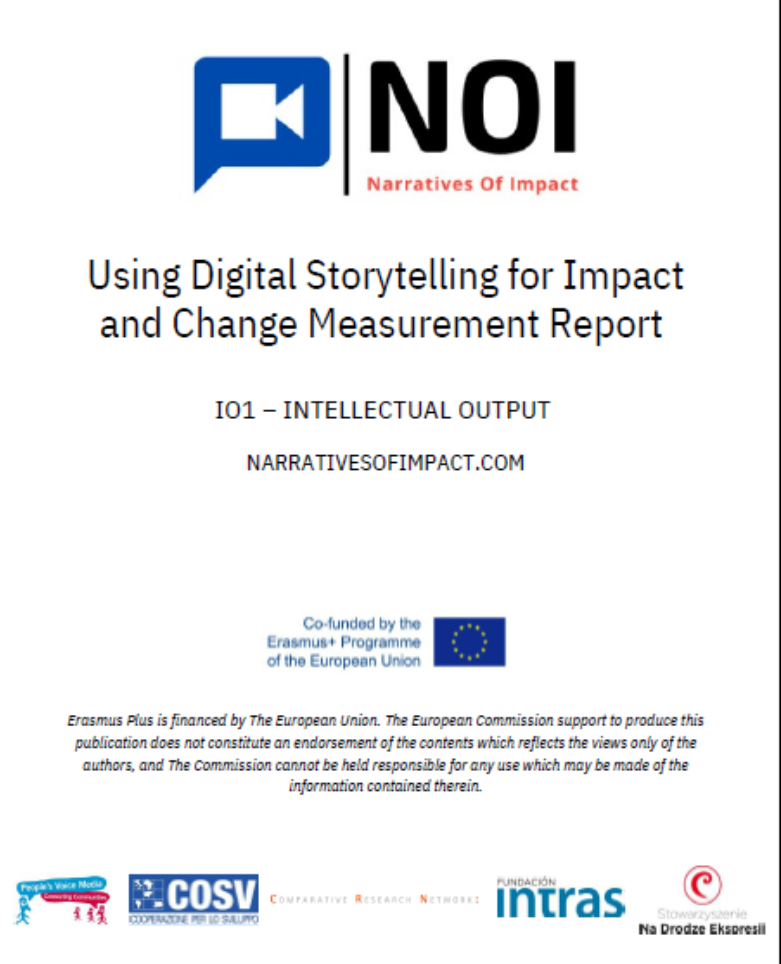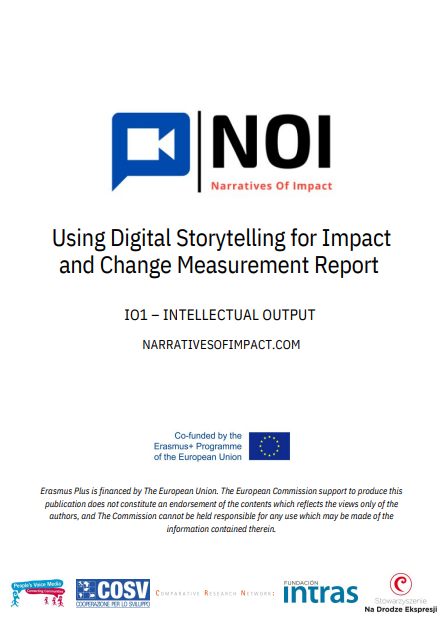Digital storytelling has emerged as a powerful tool for curating communities, driving social transformation, and advocating for social justice. Over the past two decades, projects around the world have leveraged the authentic voices found in the narration of lived experiences to create meaningful impact (Copeland, S., & De Moor, A. 2018). Building on this momentum, the Narratives of Impact (NOI) project aims to revolutionize the perception of storytelling by highlighting its potential not only as a catalyst for social change but also as a means to measure the impact and transformation it generates.
At the heart of NOI’s objectives is the desire to gain a deeper understanding of how digital stories are utilized to create impact at local, national, and pan-European levels. The project seeks to explore how stories can be effectively employed by activist groups to foster communities of change. Moreover, NOI aims to design and implement a robust stakeholder engagement strategy, examining how lived experiences can enhance connections between social services and their users. Finally, NOI endeavors to research and analyze the ways in which storytelling can serve as a tool to measure change and its subsequent impact.
To achieve these goals, NOI has assembled a partnership of five organizations with expertise in digital storytelling, operating in vocational education and training (VET) and civic society settings. This diverse partnership spans five countries and includes People’s Voice Media (UK), CRN (Germany), INTRAS (Spain), COSV (Italy), and SNDE (Poland). By pooling their resources and leveraging their collective expertise, these organizations will conduct research, engage stakeholders, and disseminate their findings to develop a series of impactful outcomes.
The project outcomes are envisioned as follows:
Result 1: A comprehensive report documenting existing methodologies and practices that utilize digital storytelling to effect change and measure its impact (IO1). Result 2: A toolkit and accompanying resources that empower individuals and organizations to effectively work with digital stories in order to create and measure impact (IO2). Result 3: Video guides that provide practical support for utilizing stories to generate and measure impact (IO3). Result 4: Training sessions for informal education trainers and facilitators, equipping them with storytelling techniques as tools for change and impact measurement. Result 5: The establishment of a network of story-based impact organizations in VET and other fields, fostering a connected peer support community. Result 6: Policy recommendations for leveraging narratives to create and measure social change.
The project encompasses three main groups of participants: the project team, the staff members of participating organizations, and a broader circle of stakeholders. The inclusion of stakeholders will be achieved through multiplier events and the partner network, facilitating their engagement and contribution to the project’s goals.
The primary target groups for NOI are educators in VET fields, researchers, professionals working in evaluation and impact assessment, civic educators, and professionals in community development organizations. These primary target groups, in turn, have the potential to reach secondary target groups—individuals from marginalized communities who often face barriers to civic participation, such as limited education, cultural and language differences, health issues, and socio-economic challenges. These secondary beneficiaries include people experiencing mental health illnesses, migrant communities, adults with learning and/or physical disabilities, and individuals who have become disengaged from society.
The expected impact of the project activities extends to partner organizations, the project team, and primary target groups. Through the acquisition of new knowledge in the realm of digital storytelling as a change-making tool (IO1) and impact assessment tool, strengthened European partnerships, and the provision of toolkits (IO2) and video guides (IO3), these stakeholders will enhance their educational practices. As for the secondary target groups, the impact will unfold in the longer term and in the realm of wider societal transformation. By educating the primary target groups in utilizing digital stories to create and measure impact, the knowledge and skills acquired will indirectly benefit the secondary beneficiaries through the channels of the primary target groups.
Sustainability stands as a pivotal element of the project’s vision. This sustainability will not only be achieved through training initiatives and the development of intellectual outputs but also by fostering a network of organizations that utilize storytelling to effect and measure change. Additionally, policy recommendations will be put forth to further advance the utilization of narratives in the pursuit of social change. By embracing sustainability at its core, the NOI project aims to create a lasting impact and promote the widespread adoption of storytelling as a transformative tool in various domains.







